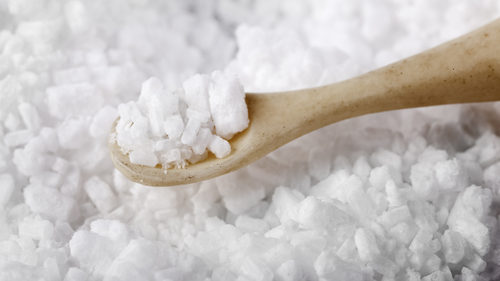If you’re reading this, chances are you’ve just heard about process addiction and are wondering what exactly that means. And at first, it is a bit tricky, but hopefully, after reading this post, you’ll have a better handle on the many types of process addictions.
It’s not as literal as the name might suggest — a person with a process addiction is not addicted to processes, just as a person with an alcohol addiction is addicted to alcohol or drug addiction is addicted to drugs. Process addiction is actually a medical term that is used as an umbrella over several different addictions. Each of these addictions shares in common that they involve a person being addicted to a specific behavior or action, known under the umbrella as a “process.”
Process addictions are their own specific and separately recognized set of addictions, but are often seen together with substance addiction. Often, process addictions and mental illness are closely related as well, or can even be misdiagnosed for one another. But like with any addiction, identifying the problem is the first step to recovery, to help you learn what your addiction means and how it is affecting your life and wellbeing.
In this post, we’re going to break down process addiction to help you with the first step and lead you down a path to understanding and process addiction treatment. Let’s dive right in.
What is Process Addiction?
We touched on it already, but now let’s discuss process addictions in more depth.
A process addiction occurs when a person becomes addicted to a rewarding behavior that does not involve an addictive substance, such as opioids or alcohol. Examples of process addictions include sex, overeating, and gambling, among many others. We will go over the different types a bit later on.
Process addictions, also commonly referred to as behavioral addictions, involve a compulsion to perform an action or behavior despite its negative consequences. The person affected will be dependent on performing a certain process, and become controlled by their addiction. The interesting thing to note here is that although there is no substance involved in a process addiction, the chemical processes that occur in the brain during the behavior are incredibly similar to the changes that take place when a person takes a substance.
Therefore the best way to view the question of “what does behavioral addiction mean?” is that the person is addicted to a process or behavior and that their addiction affects the brain in the same way as a substance addiction. You can also think of a process addiction as any kind of behavioral addiction that does not involve an addictive substance.
Unfortunately, process addictions are often overlooked or thought to be not as serious as substance addictions. However, process addictions can often have debilitating consequences that are just as serious as those associated with substance abuse. Often, a person with a process addicted may also have a problem with substance abuse, but even when so, the addictions must be addressed and treated separately for a full, successful recovery.
Process addictions are often taken less seriously because not as much is understood about them, and they aren’t as publicized as substance abuse. There is also more shame and guilt involved with process addictions for this reason. It’s easy to understand a person becoming addicted to a substance, but strong psychological compulsions to a process are much more complex. Just as with substance addictions, deciding to quit is no easy process, and there are real chemical and biological changes that occur within the person’s brain that will need addressing.
How Does a Process Addiction Occur?
While there is currently no universal definition for process addiction, a process addiction will consist of a compulsion to repeatedly engage in an action until it causes negative consequences to a person’s physical, mental, social, and/or financial well-being. Essentially, a person has developed a process addiction when something that started as a habit or a hobby becomes a problem.
A process addiction can often be identified by some of the following characteristics:
- An obsessive need to plan and participate in the given behavior or activity
- A general feeling of being unable to control whether or not you participate in the behavior or activity
- Neglecting responsibilities as a result of the behavior or activity, such as being late to work due to staying up all night gambling.
- Fractured relationships because of infidelity or neglect
- Legal consequences if the compulsion leads the person to illegal activity
- Being preoccupied with the behavior or activity when doing other things
- Using the behavior or activity to cope with certain unpleasant situations
- Continued participation despite its negative consequences
- Having your life revolve around your addiction
How a person becomes addicted to a process is rather complex, and is influenced by their individual mental health state, genetics, social status, and past experiences. But broken down scientifically, a process addiction will stimulate the reward center in a person’s brain just as a substance, creating a “natural” high in the brain. Because this natural high feels good, the person will want more to achieve the “high”, and it can lead to addictive behavior.
A process addiction can start as having fun gambling, enjoying large meals or the occasional spending spree. As time goes on, the person will continue the behavior over and over for the same good feelings.
Luckily, process addictions are not associated with the high incidences of mortality that are seen with substance addictions, but there are many psychological effects that can cause problems, some of which we listed above. Other negative effects can include depression, social anxiety, and the development of an additional substance addiction. Likewise, these symptoms can also serve as precursors to developing a behavioral addiction.
Excessive or longer-lasting process addictions can cause lasting chemical changes in the person’s reward system in their brain. Those with a genetic predisposition to addictive behaviors are found to have an inadequate number of dopamine receptors or serotonin and dopamine, which makes them more susceptible to addiction because they cannot experience normal levels of pleasure that most people would find rewarding. They, therefore, have to turn to other activities for their reward, which leads to addictive behavior.
Types of Process Addictions
There are many types of behaviors and activities that fall under the process addiction umbrella. Part of the greater problem with process addictions is that many of the common behavioral actions are socially acceptable, some even necessary, such as sex or eating. This contributes to the lack of awareness that a person has developed a problem, as negative consequences begin to pile up.
To help things not reach a problematic level, let’s go over a few of the most common process addictions.
Compulsive Gambling
Millions of Americans fit under the “pathological” or “problem” gambler profile. These individuals typically are prone to addictive behavior and are often highly-competitive people. A person who is a compulsive gambler will continue to gamble despite ongoing and mounting financial difficulties. Issues from compulsive gambling can also spill over to affect a person’s work performance and relationships.
Sex Addiction
Sex addiction can come in many forms, including a compulsive need to engage in sexual conduct, thoughts, or fantasies. This umbrella addiction also includes excessive masturbation, cybersex, the use of and addiction to pornography, phone sex, visits to the strip club, and much more.
Sexual activity can often be quite healthy, and enjoying sex does not mean a person has an addiction, but when it becomes a person’s only source of pleasure, and/or replaces their other healthy interests and relationships, then it moves into addiction. Sexual addiction will involve a sexual preoccupation that has reached the point of obsession and a loss of control over their sexual urges. These urges can cause negative consequences, such as shattered relationships, a loss of interest in nonsexual activities, and more.
Work Addiction
Although work addiction, or workaholism, is not recognized by the American Psychiatric Association as an addiction, it does share similarities with other related impulse control disorders. An addiction to work, or the need to constantly be working, can lead a person to invest so much of their time into their work that it impairs other aspects of their life. A person with a work addiction will have an uncontrollable need to work.
Spending or Compulsive Buying Addiction
The rise of the Internet has made compulsive buying, shopping, and spending, more of a problem worldwide, and especially in the U.S. Compulsive shopping involves a pattern of chronic, repetitive purchasing that the person will find difficult to stop, and can lead to harmful consequences, such as mounting debt.
The person will get a sense of euphoria and rush of positive emotions from making the purchases that are similar to a substance high. They will become consumed to shop even when they know they are in debt and/or out of money, and have maxed out credit cards, leading to an inability to pay bills or handle other responsibilities.
Internet Addiction
Being addicted to the Internet may involve several different behaviors or activities, including online gaming, shopping, gambling, social media, pornography, and even just frequently checking email. Internet addiction disorder (IAD) is also known as problematic Internet use (PIU).
Those with an Internet addiction can experience multiple layers of reward from the various computer applications, which when combined with mood, can intensify the reward. For example, a chat room may give a person a sense of belonging, while pornography provides sexual stimulation. Video games allow the person to play out a fantasy where they are the hero, and online gambling offers the prospect of financial reward.
Symptoms of Process Addictions
There are many more process addictions, but these are the most common and researched. A process addiction can occur any time someone loses control over any process to the point that it causes problems in their daily life. Process addictions lack the physical symptoms that will signify a person is having a problem with substance abuse, but can still lead to serious problems in the person’s life.
Addiction occurs when a person loses control over a certain process, and they most often cannot reverse the behavior on willpower alone. The loss of control will be coupled with cravings, that motivate the person to continue their behavior despite its negative consequences. It’s important to note that it is not a moral failing for a person to have a process addiction, as it is a real addiction and one that will often take a treatment program to recover from.
Similar to an addiction to a substance, a person with a process addictions may show some of the following symptoms:
- Cravings and an inability to resist the impulse to conduct a behavior
- Narrowed interest outside of their addiction
- Withdrawal symptoms – irritability when access to the behavior is limited
- Building a tolerance and having decreased pleasure in the activity over time
- Denial that there is a problem
- Feelings of guilt associated with the behavior
- Lying about their addiction
- Hiding the behavior
- Family, work, and financial problems due to their addiction
Summary
Although process addictions are not as visual or given mainstream attention like substance addictions, they can be every bit as life-consuming and lead to rather unfortunate consequences. They should be treated with the same seriousness as other addictions as the addict may very well require professional treatment to fully recover. If you or someone you know is dealing with a process addiction, consider getting treatment at a professional recovery center like Haven House.



